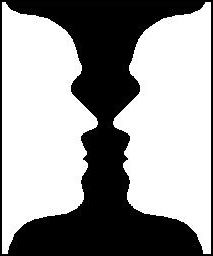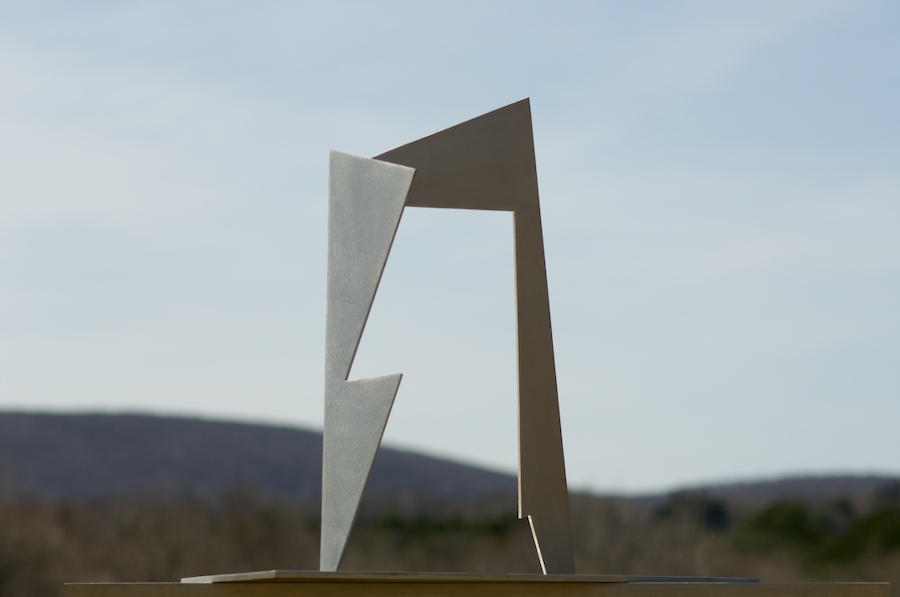How to Draw
Drawing is a basic skill for artists
Negative Space
Introduction
In a painting or drawing, the space around the object is just as important as the object itself. A good artist strives for a balance between the positive space (the object) and the negative space (the background) around it but have to plan for these spaces and use them wisely to create the atmosphere of the drawing. The object of this lesson is to work with this surrounding space. We can train ourselves to see the negative space as easily and instinctively as we see the object itself.
Reflection
When we look around us we tend to see recognizable objects rather than the unrecognizable space between the objects. Optical illusions often use this fact to trick the eye. Perhaps you've seen the vase-face illusion?

You can see either two faces or a black vase. It is almost impossible to see both at the same time because one defines the other. The black area defines the shape of the faces, and the white spaces define the vase.
How?
Flatten the object in your minds eye and allow yourself to really focus upon the object. Then, make yourself focus instead upon the space around the object. Once you have become used to seeing things in two ways (as solid objects, and as objects surrounded by negative space), make a drawing whereby instead of drawing the object, you draw the negative spaces around the object.
Often when doing a drawing in this way, you'll finish and suddenly notice how accurate it looks! Because the shapes of the negative spaces are less recognizable, you really have to look carefully to see them - you can't second guess them. Instead of letting your left brain tell you 'you're drawing a chair', your right brain sees only shapes, draws those, and the end result is a chair. Use this technique whenever you feel you are struggling with drawing something the way it looks. Switch your mind to seeing the negative space, and try drawing that instead.
To help you see the negative space you can make a viewfinder (a piece of card with a window cut into it of the same proportions as your drawing paper). Hold the viewfinder in front of your eye, and frame the thing you are drawing. Use the frame of the viewfinder to create a boundary for the negative space.
The terms positive and negative can also be described using the following:



In a painting or drawing, the space around the object is just as important as the object itself. A good artist strives for a balance between the positive space (the object) and the negative space (the background) around it but have to plan for these spaces and use them wisely to create the atmosphere of the drawing. The object of this lesson is to work with this surrounding space. We can train ourselves to see the negative space as easily and instinctively as we see the object itself.
Reflection
When we look around us we tend to see recognizable objects rather than the unrecognizable space between the objects. Optical illusions often use this fact to trick the eye. Perhaps you've seen the vase-face illusion?

You can see either two faces or a black vase. It is almost impossible to see both at the same time because one defines the other. The black area defines the shape of the faces, and the white spaces define the vase.
How?
Flatten the object in your minds eye and allow yourself to really focus upon the object. Then, make yourself focus instead upon the space around the object. Once you have become used to seeing things in two ways (as solid objects, and as objects surrounded by negative space), make a drawing whereby instead of drawing the object, you draw the negative spaces around the object.
Often when doing a drawing in this way, you'll finish and suddenly notice how accurate it looks! Because the shapes of the negative spaces are less recognizable, you really have to look carefully to see them - you can't second guess them. Instead of letting your left brain tell you 'you're drawing a chair', your right brain sees only shapes, draws those, and the end result is a chair. Use this technique whenever you feel you are struggling with drawing something the way it looks. Switch your mind to seeing the negative space, and try drawing that instead.
To help you see the negative space you can make a viewfinder (a piece of card with a window cut into it of the same proportions as your drawing paper). Hold the viewfinder in front of your eye, and frame the thing you are drawing. Use the frame of the viewfinder to create a boundary for the negative space.
The terms positive and negative can also be described using the following:
- foreground/background
- figure/ground
- figure/field
- solid/void


